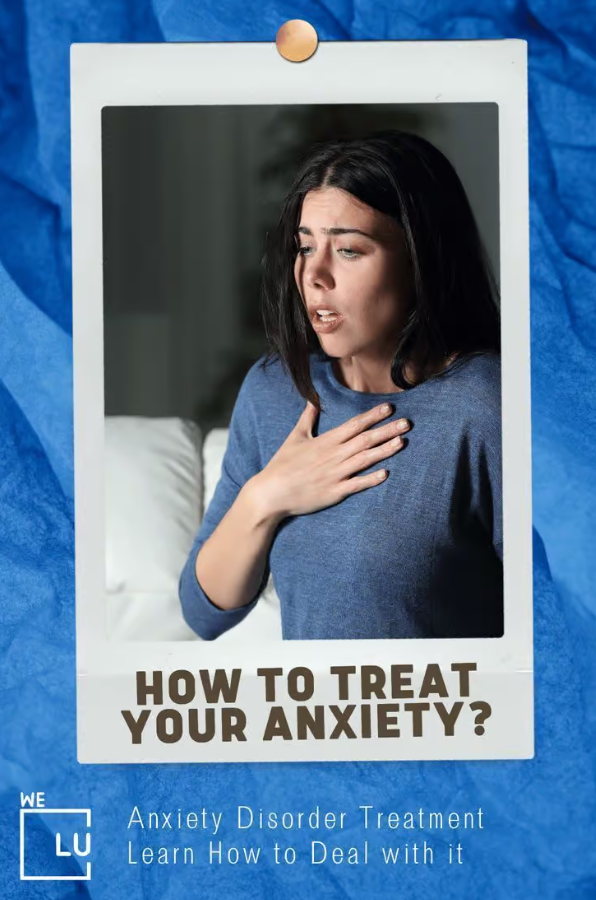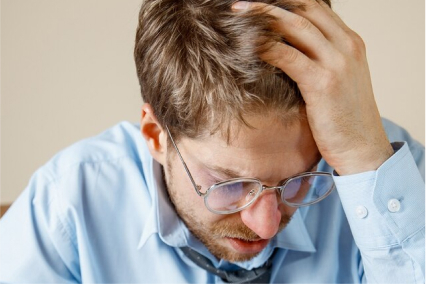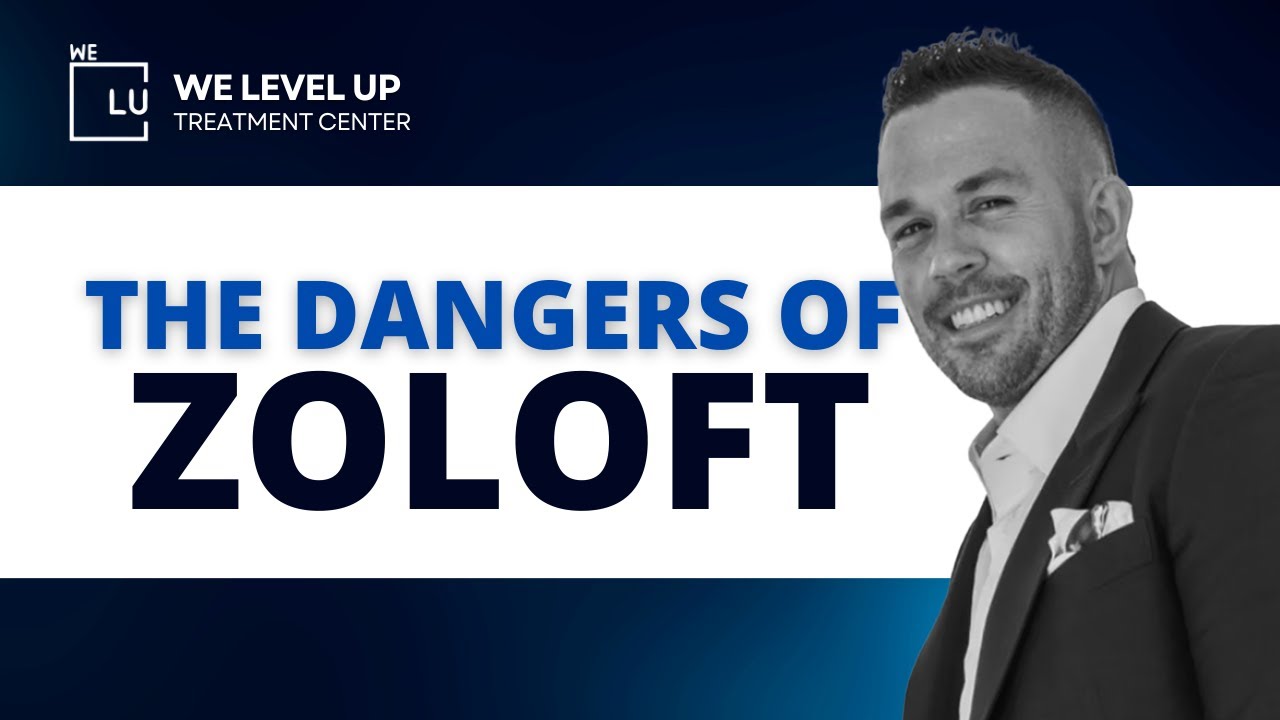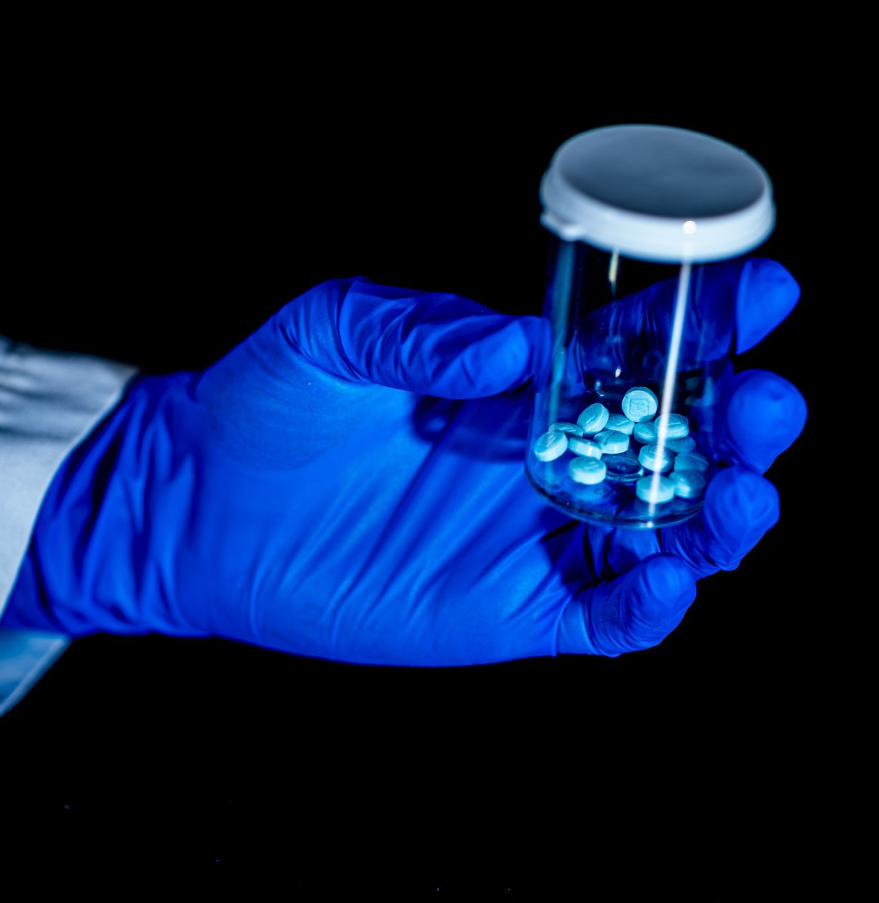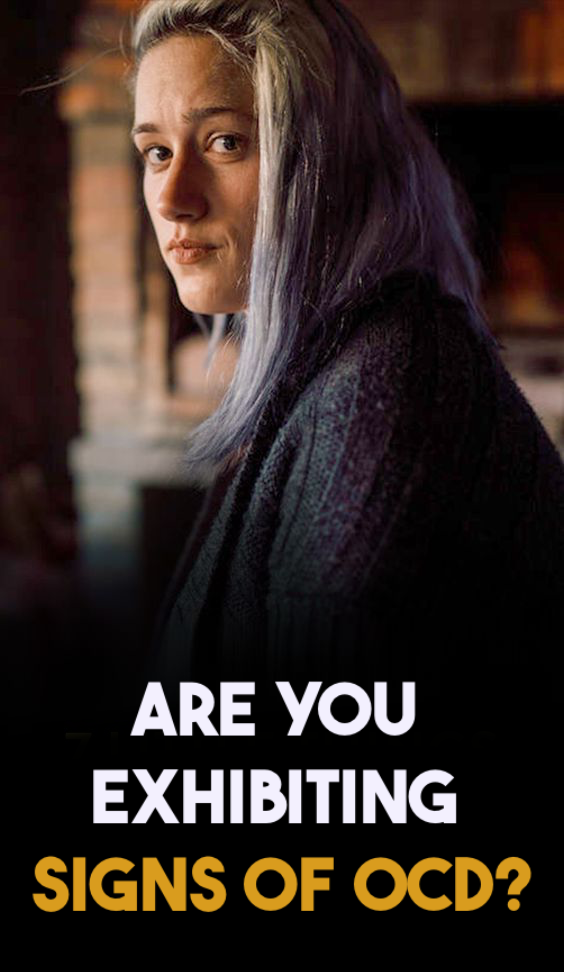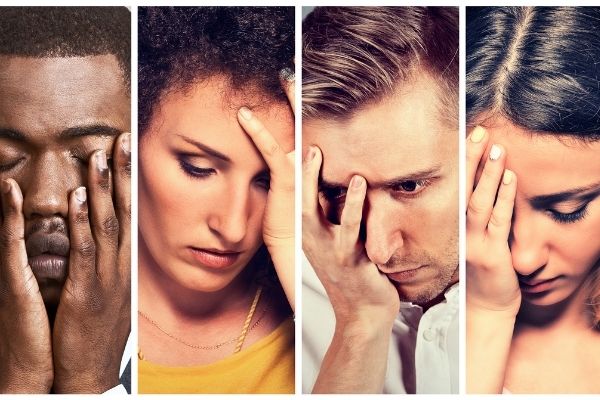Panic Attack vs Anxiety Attack Overview
Abrupt and intense feelings of terror accompanied by physical symptoms such as sweating, rapid breathing, and a racing heart define panic attacks. Individuals experiencing these episodes might, over time, develop anxiety disorders, specifically panic disorder.
The We Level Up Texas Treatment Center specializes in helping clients with both anxiety disorders and substance abuse. Reclaim your life today – call us 24/7 for a free consultation.
Anxiety Attack vs Panic Attack Key Differences and Similarities
Panic disorder often peaks in adolescence and early adulthood, with low prevalence in kids below the age of 14. And females are more affected than men. Individuals with panic attacks also share many other comorbidities, including:
- Obsessive-compulsive disorder (OCD).
- Post-traumatic stress disorder (PTSD).
- Social phobia.
- Asthma.
- Chronic obstructive pulmonary disease (COPD).
- Irritable bowel syndrome (IBS).
- Hypertension.
- Mitral valve prolapse (heart valve disease).
Panic Attack Symptoms
Panic Attack Symptoms
The vast majority of people with panic disorder complain of chest pain and palpitations on multiple events. Other common symptoms may include:
- Sudden and intense feelings of fear or terror.
- Rapid heart rate.
- Shortness of breath.
- Chest pain or discomfort.
- Trembling or shaking.
- Sweating.
- Chills or hot flashes.
- Nausea or abdominal distress.
- Dizziness or lightheadedness.
- Feeling detached from reality.
- Fear of losing control or going crazy.
- Fear of dying.
- Numbness or tingling sensations.
- Hyperventilation.
- Muscle tension or aches.
- Restlessness or feeling on edge.
- Difficulty concentrating.
- Avoidance of places or situations that may trigger panic attacks.
- Persistent worry about having another panic attack.
While anxiety and panic disorders can overlap, anxiety is different from panic attacks. Panic attacks involve sudden, intense episodes of fear, distress, and a sense of impending doom. Anxiety attacks typically stem from a concern about a specific event or issue.
Anxiety Attack Symptoms
Anxiety Attack Symptoms
Anxiety attacks can affect your daily life. Here are the most common symptoms:
- Rapid heartbeat.
- Shortness of breath.
- Dizziness.
- Nausea.
- Headaches.
- Muscle tension.
- Trembling or shaking.
- Sweating.
- Chills or hot flashes.
- Chest pain or discomfort.
- Feeling detached or unreal.
- Fear of losing control or going crazy.
- Fear of dying.
- Numbness or tingling sensations.
- Difficulty swallowing.
Symptoms of Panic Attack vs. Anxiety Attack Chart
| Symptom | Panic Attack | Anxiety Attack |
|---|---|---|
| Intensity | Sudden and intense | Gradual and may build over time |
| Duration | Peaks quickly, often within minutes | May persist for a more extended period |
| Physical Symptoms | Rapid heart rate, shortness of breath, chest pain, sweating | Muscle tension, fatigue, trembling, restlessness |
| Cognitive Symptoms | The feeling of impending doom, fear of losing control or dying | Excessive worry, fear of the future, overthinking |
| Triggers | Often without an apparent cause or triggered by unexpected situations | May be triggered by specific stressors or situations |
| Avoidance | Avoidance of places or situations associated with past panic attacks | May avoid certain situations but not to the same extent as panic attacks |
| Onset | Can occur suddenly and unpredictably | May develop gradually in response to ongoing stressors |
Causes of Anxiety vs Panic Attack
Why some people go through panic episodes or end up with panic disorder is still a bit of a puzzle for scientists. However, if you’re at a higher risk of anxiety disorders including panic attacks, it might be due to:
- If a close family member has a panic disorder, your risk increases by 40%.
- Depression or other mental health issues are more susceptible to panic attacks.
- Traumatic events between ages 1 and 17 can contribute to panic attacks.
Panic attacks usually don’t have a specific trigger, but individuals with specific phobias may experience panic due to related triggers. For instance, someone with a fear of needles might have an attack during a medical test. It’s worth noting that panic disorder criteria include attacks without a known trigger.
The Difference Between Anxiety Attack and Panic Attack Diagnosis
For both panic and general anxiety symptoms, a healthcare provider will inquire about what you’ve been feeling and your health history.
To rule out other conditions that mimic panic attacks, like heart or thyroid issues, they might request some lab tests.
The Difference Between Panic Attack and Anxiety Attack Treatments
Psychotherapy, medications, or a combination of both are very effective in treating panic attacks and anxiety disorders.
As an added benefit in patients with anxiety and panic attacks who also have concomitant comorbid medical illnesses, there are advantages of their therapeutic regimens that may also secondarily help their respective medical diseases. For instance, breathing training is a method of reducing panic attacks. Several of these slow-breathing methods have been shown to benefit patients with hypertension and asthma. Also, hyperventilation reduction can help patients with cardiovascular disease.
Most people will have a recurrence of anxiety disorder symptoms even after a symptom-free period. Treatment adherence is a significant issue, and thus, relapse of symptoms is common. According to research in the NCBI, only about 60% of patients achieve remission (a temporary recovery) within six months. Triggers for poor outcomes include:
- Chronic illness.
- High interpersonal sensitivity.
- Unmarried.
- Low social class.
- Living alone.
Anxiety disorders are linked with a higher risk of suicidal ideation. It is also associated with decreased quality of life as the patient cannot function normally in their social and family life. The disorders are correlated with an increased risk of comorbid medical conditions and smoking. [1]
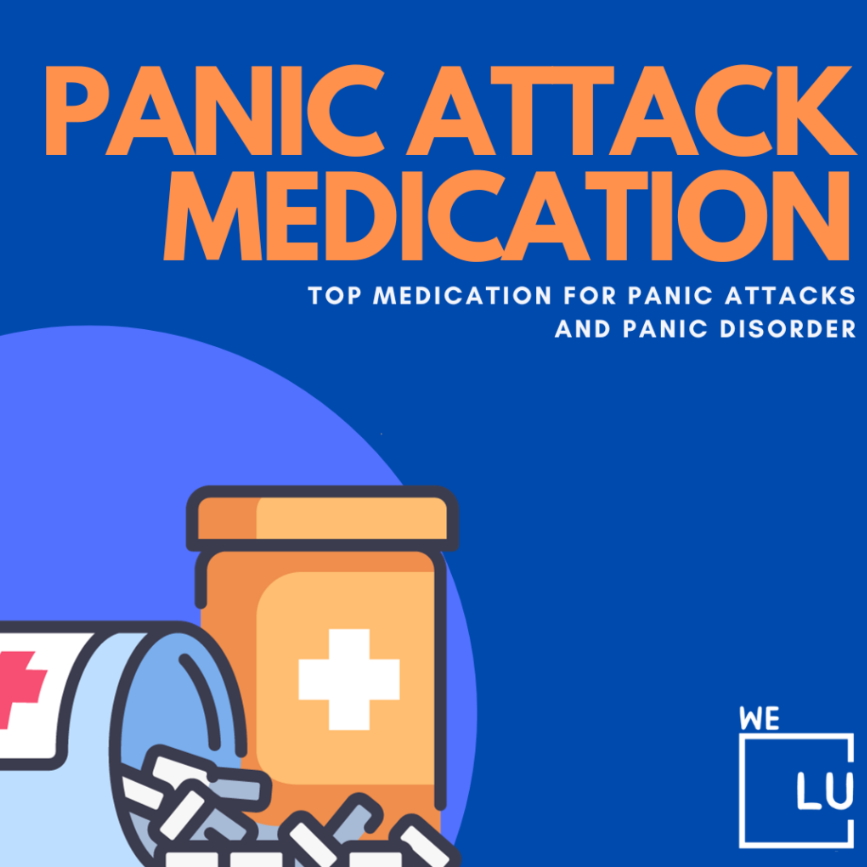
Skip To:
Learn More:
- How to Calm Anxiety Attacks? Symptoms, Causes, and Treatment
- Top 10 Tips on How to Reduce Anxiety Immediately
- Beta Blockers for Anxiety Benefits, Dangers, and Side Effects
- Separation Anxiety in Adults, Causes, Symptoms, and Treatment
- Does Alcohol Help Anxiety?
- Dangers of Mixing Anxiety Medication and Alcohol
- What is Sleep Anxiety?
- What to Know About Valium for Anxiety
- Alcohol and Anxiety Co-Occurring Disorders
Psychotherapy for Panic Attacks vs Anxiety Attacks
Anxiety and panic disorder therapies exist in a variety of forms and are frequently combined:
- CBT (Cognitive Behavioral Therapy): Helps you see things differently and cope with triggers, with support from a counselor.
- Cognitive Therapy: Targets and changes unhelpful thoughts linked to anxiety.
- Exposure Therapy: Gradual exposure to fears helps you face and manage them.
- Relaxation Techniques: Breathing exercises, imagery, and more, guided by your doctor.
Your doctor may suggest individual, group sessions, or a mix based on what works for you.
How to Help Panic and Anxiety Attacks with Medications?
Many of the non-addictive anti-anxiety medications are SSRIs or antidepressants.
Other most common anti-anxiety meds are:
- Benzodiazepines (e.g., Xanax, Ativan).
- Selective serotonin reuptake inhibitors (SSRIs) (e.g., Prozac, Zoloft).
- Serotonin-norepinephrine reuptake inhibitors (SNRIs) (e.g., Effexor, Cymbalta).
- Beta-blockers (e.g., propranolol).
- Buspirone (BuSpar).
- Tricyclic antidepressants (e.g., imipramine).
- Monoamine oxidase inhibitors (MAOIs) (e.g., Nardil, Parnate).
- Hydroxyzine (Vistaril).
- Gabapentin (Neurontin).
- Pregabalin (Lyrica).
Medication should only be taken under a licensed healthcare provider’s supervision. Never change your dose or self-prescribe without first seeing a doctor. Certain anti-anxiety drugs may interact with other medications or have unintended consequences, such as benzos being highly habit-forming. If you suffer adverse side effects, get help right away. Avoid drinking alcohol when taking specific drugs, and use caution when engaging in activities that call for attention since most anti-anxiety meds can cause drowsiness.
If you’re struggling with anxiety disorders and substance abuse, get resources about treatment counseling today. Start getting support with a free call to our mental health and addiction hotline.
Get Help. Get Better. Get Your Life Back.
Searching for Accredited Drug and Alcohol Rehab Centers Near You? We Level Up Texas Is Opening Soon!
Even if you have failed previously and relapsed, or are in the middle of a difficult crisis, we stand ready to support you. Our trusted behavioral health specialists will not give up on you. When you feel ready or just want someone to speak to about therapy alternatives to change your life call us. Even if we cannot assist you, we will lead you to wherever you can get support. There is no obligation. Call our network hotline today.
FREE Addiction Hotline – Call 24/7Home Remedies for Panic vs Anxiety Attack
Whether you’re dealing with sudden episodes of panic or persistent feelings of anxiety, consider these remedies to help alleviate symptoms and promote a sense of calm:
- Deep breathing exercises.
- Mindfulness meditation.
- Progressive muscle relaxation.
- Herbal teas (e.g., chamomile).
- Aromatherapy with calming scents (e.g., lavender).
- Regular exercise.
- Adequate sleep.
- Limiting caffeine intake.
- Warm baths.
- Seeking social support.
- Journaling.
- Visualization techniques.
- Yoga.
- Cognitive-behavioral techniques.
- Listening to calming music.
- Taking breaks in nature.
- Dietary adjustments.
- Acupuncture.
- Massage therapy.
- Self-help books or resources.
How Can I Prevent Panic/Anxiety Attacks?
Incorporating healthy lifestyle habits and stress-reducing strategies into your daily routine can significantly minimize the likelihood of experiencing anxiety episodes. Consider the following preventive measures:
- Regular exercise.
- Healthy diet.
- Adequate sleep.
- Stress management techniques.
- Deep breathing exercises.
- Mindfulness meditation.
- Progressive muscle relaxation.
- Limiting caffeine intake.
- Avoiding alcohol and recreational drugs.
- Establishing a routine.
- Setting realistic goals.
- Seeking social support.
- Cognitive-behavioral therapy.
- Identifying and challenging negative thoughts.
- Learning to say no and setting boundaries.
- Time management strategies.
- Regular breaks and self-care activities.
- Yoga or tai chi.
- Regular medical check-ups.
- Developing coping mechanisms.
If you’re seeking assistance with your rehab journey, reach out to a We Level Up Texas treatment professional today—your call is free and confidential.
Opening Soon! First-Class Facilities & Amenities
World-Class High-Quality Addiction & Mental Health Rehabilitation Treatment
Coming Soon! Rehab Centers TourRenowned Addiction Centers. Serene Private Facilities. Inpatient Rehab Programs Vary.
FREE Addiction Hotline – Call 24/7Proven recovery success experience, backed by a Team with History of:
15+
Years of Unified Experience
100s
5-Star Reviews Across Our Centers
10K
Recovery Success Stories Across Our Network
- Low Patient to Therapist Ratio
- Onsite Medical Detox Center
- Comprehensive Dual-Diagnosis Treatment
- Complimentary Family & Alumni Programs
- Coaching, Recovery & Personal Development Events
We Level Up Texas Dual Diagnosis Rehab Center
The healthcare professionals at We Level Up Texas inpatient anxiety treatment and dual diagnosis rehab believe that addressing both the underlying issues and addiction together boosts the chances of successful, relapse-free recovery. Once we identify and start treating the mental health problems tied to alcohol or drug dependency, it brings individuals closer to long-term sobriety.
The symptoms of the multiple disorders that can occur alongside addiction can present complex and similar symptoms. Accurate diagnosis requires a highly trained professional team with years of experience.
Substance use disorders often start as a way to cope with anxiety issues and social status or as a form of self-medication. Some roots are situational, while others may be linked to brain imbalances. Acknowledging a mental health issue is a crucial step, leading to more effective treatment for concurrent alcoholism or drug addiction.
Professional guidance is essential to identify underlying conditions, and dual diagnosis treatment typically involves detox and a focused residency program to equip individuals with tools for long-term recovery.
Get a free anxiety treatment insurance check without any obligation.

Opening Soon! World-class, Accredited, Anticipated 5-Star Reviewed, Effective Addiction & Mental Health Programs. Complete Behavioral Health Inpatient Rehab, Detox plus Co-occuring Disorders Therapy.
FREE Addiction Hotline – Call 24/7End the Addiction Pain. End the Emotional Rollercoaster. Get Your Life Back. Start Drug, Alcohol & Dual Diagnosis Mental Health Treatment Now. Get Free No-obligation Guidance by Substance Abuse Specialists Who Understand Addiction & Mental Health Recovery & Know How to Help.
5 Effective Ways To Manage Anxiety (2024 TIPS) Informative Video
Start a New Life
Begin with a free call to an addiction & behavioral health treatment advisor. Learn more about our dual-diagnosis programs. The We Level Up treatment center network delivers recovery programs that vary by each treatment facility. Call to learn more.
- Personalized Care
- Caring Accountable Staff
- World-class Amenities
- Licensed & Accredited
- Renowned w/ 100s 5-Star Reviews
We’ll Call You
Search We Level Up Texas Panic Attack vs Anxiety Attack, Mental Health Topics, and Resources
Sources
- Cackovic C, Nazir S, Marwaha R. Panic Disorder. [Updated 2023 Aug 6]. In: StatPearls [Internet]. Treasure Island (FL): StatPearls Publishing; 2023 Jan-. Available from: https://www.ncbi.nlm.nih.gov/books/NBK430973/ Related research for best medication for panic attacks and anxiety; panic attacks or anxiety; anxiety attacks vs panic attacks; difference between anxiety and panic attacks.
- The Key Substance Use and Mental Health Indicators in the United States: Results from the 2021 National Survey on Drug Use and Health – Substance Abuse and Mental Health Services Administration (SAMHSA)
- Center for Substance Abuse Treatment (US). Trauma-Informed Care in Behavioral Health Services. Rockville (MD): Substance Abuse and Mental Health Services Administration (US); 2014. (Treatment Improvement Protocol (TIP) Series, No. 57.) Chapter 3, Understanding the Impact of Trauma. Available from: https://www.ncbi.nlm.nih.gov/books/NBK207191/
- Pearson J, Naselaris T, Holmes EA, Kosslyn SM. Mental Imagery: Functional Mechanisms and Clinical Applications. Trends Cogn Sci. 2015 Oct;19(10):590-602. Doi: 10.1016/j.tics.2015.08.003. PMID: 26412097; PMCID: PMC4595480.
- Smith JP, Book SW. Anxiety and Substance Use Disorders: A Review. Psychiatr Times. 2008 Oct;25(10):19-23. PMID: 20640182; PMCID: PMC2904966. https://www.ncbi.nlm.nih.gov/pmc/articles/PMC2904966/
- Munir S, Takov V. Generalized Anxiety Disorder. [Updated 2022 Oct 17]. In: StatPearls [Internet]. Treasure Island (FL): StatPearls Publishing; 2023 Jan-. Available from: https://www.ncbi.nlm.nih.gov/books/NBK441870/
- Lakhan SE, Vieira KF. Nutritional and herbal supplements for anxiety and anxiety-related disorders: systematic review. Nutr J. 2010 Oct 7;9:42. Doi: 10.1186/1475-2891-9-42. PMID: 20929532; PMCID: PMC2959081.
- Brady KT, Haynes LF, Hartwell KJ, Killeen TK. Substance use disorders and anxiety: a treatment challenge for social workers. Soc Work Public Health. 2013;28(3-4):407-23. Doi: 10.1080/19371918.2013.774675. PMID: 23731428; PMCID: PMC3775646. https://www.ncbi.nlm.nih.gov/pmc/articles/PMC3775646/
- Mental Health Conditions: Depression and Anxiety – Centers for Disease Control and Prevention (CDC) https://www.cdc.gov/tobacco/campaign/tips/diseases/depression-anxiety.html
- Aylett E, Small N, Bower P. Exercise in treating clinical anxiety in general practice – a systematic review and meta-analysis. BMC Health Serv Res. 2018 Jul 16;18(1):559. Doi: 10.1186/s12913-018-3313-5. PMID: 30012142; PMCID: PMC6048763.
